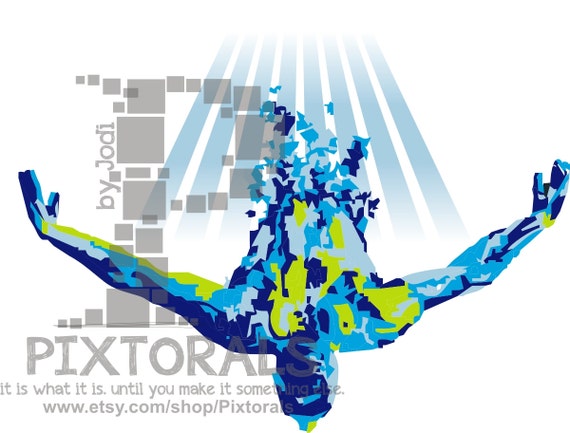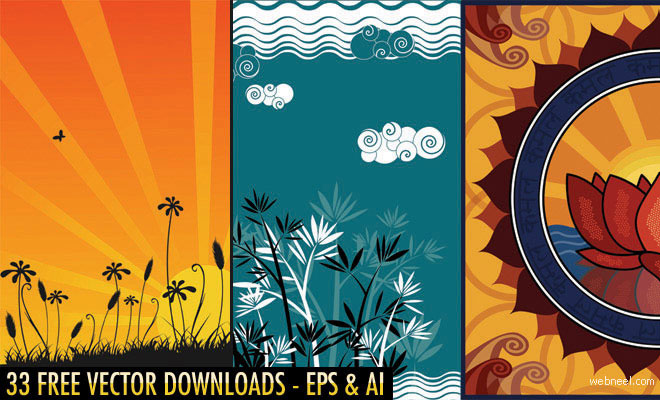High quality vector images only. Large collection of professional Royalty-Free vector images and EPS vinyl-ready vector clipart sets. Instant download access. Since vector graphics store image data as paths, they can be enlarged without losing quality, which makes them a good choice for logos and other types of drawings. Common vector image file extensions include.EPS,.AI, and.SVG. Other image file categories include Raster Graphic and 3D Image files. Publicdomainvectors.org, offers copyright-free vector images in popular.eps,.svg,.ai and.cdr formats.To the extent possible under law, uploaders on this site have waived all copyright to their vector images. You are free to edit, distribute and use the images for unlimited commercial purposes without asking permission. These barcode vectors can be a great asset to you vector graphics collection and you can get them for free just by downloading them from our website. As you can see from our gallery below, we have two EPS files containing numerous barcode vector designs that can be fitted just about anywhere in your projects, so don't hesitate and download these vector graphics right away.
InDesigncan import a wide range of graphics file formats. Consult with the serviceproviders who will help you produce your document to clarify which formatsto use. You can then plan your document around those formats andthe options that best apply to your project.
The following table summarizes what graphics formats would workbest for the kind of document you’re designing.
Final output | Graphics type | Format |
|---|---|---|
High resolution (>1000dpi) | Vector drawings | Illustrator, EPS, PDF |
Bitmap images | Photoshop, TIFF, EPS, PDF | |
Process-color separations | Vector drawings | Illustrator, EPS, PDF |
Color bitmap images | Photoshop, CMYK TIFF, DCS, EPS, PDF | |
Color-managed graphics | Illustrator, Photoshop, RGB TIFF, RGB EPS,PDF | |
Low-resolution printing, or PDF for onlineviewing | All | Any (BMP images only) |
Web | All | Any (InDesign converts graphics to JPEGand GIF when exporting to HTML) |
Vectorgraphics (sometimes called vector shapes or vectorobjects) are made up of lines and curves definedby mathematical objects called vectors, which describe animage according to its geometric characteristics.
You can freely move or modify vector graphics without losingdetail or clarity, because they are resolution-independent—theymaintain crisp edges when resized, printed to a PostScript printer,saved in a PDF file, or imported into a vector-based graphics application.As a result, vector graphics are the best choice for artwork, suchas logos, that will be used at various sizes and in various output media.
The vector objects you create using the drawing and shape toolsin Adobe Creative Suite are examples of vectorgraphics. You can use the Copy and Paste commands to duplicate vectorgraphics betweenCreative Suite components.
Bitmapimages—technically called raster images—use a rectangulargrid of picture elements (pixels) to represent images. Each pixelis assigned a specific location and color value. When working withbitmap images, you edit pixels rather than objects or shapes. Bitmapimages are the most common electronic medium for continuous-toneimages, such as photographs or digital paintings, because they canmore efficiently represent subtle gradations of shades and color.

Bitmap images are resolution-dependent—that is, they containa fixed number of pixels. As a result, they can lose detail andappear jagged if they are scaled to high magnifications on‑screenor if they are printed at a lower resolution than they were createdfor.
Bitmap images sometimes require large amounts of storage space,and often need to be compressed to keep file sizes down when usedin certain Creative Suite components. Forinstance, you compress an image file in its original applicationbefore you import it into a layout.
Note:
In Adobe Illustrator, you can create bitmap effects in yourartwork using effects and graphic styles.
Bitmap images contain a fixed number of pixels,usually measured in pixels per inch (ppi). An image with a highresolution contains more, and therefore smaller, pixels than animage of the same printed dimensions with a low resolution. For example,a 1‑inch‑by‑1‑inch image with a resolution of 72 ppicontains a total of 5184 pixels (72 pixels wide x 72 pixels high= 5184). The same 1‑inch‑by‑1‑inch image with a resolution of 300 ppiwould contain a total of 90,000 pixels.
For imported bitmapimages, image resolution is determined by the source file. For bitmapeffects, you can specify a custom resolution. To determine the image resolutionto use, consider the medium of final distribution for the image.The following guidelines can help you determine your requirementsfor image resolution:
Commercialprinting requires 150 to 300 ppi (or more) images, dependingon the press (dpi) and screen frequency (lpi) you’re using; alwaysconsult your prepress service provider before making production decisions.Because commercial printing requires large, high-resolution images, whichtake more time to display while you’re working with them, you maywant to use low-resolution versions for layout and then replacethem with high-resolution versions at print time.
In Illustratorand InDesign, you can work with low resolution versions by using theLinks panel. In InDesign you can choose either Typical or Fast Displayfrom the View > Display Performance menu; in Illustratoryou can choose View > Outline. Alternatively, if yourservice provider supports Open Prepress Interface (OPI), they mayprovide low-resolution images to you.
Desktop printing usually requires images within the rangeof 72 ppi (for photographs printed on a 300 ppi printer)to 150 ppi (for photographs printed on devices up to 1000 ppi).For line art (1‑bit images), make sure that the resolution of yourgraphics matches the resolution of the printer.
Becauseonline publishing generally requires images with pixel dimensionsthat fit the intended monitor, the images are usually less than 500pixels wide and 400 pixels tall, to leave room for browser windowcontrols or such layout elements as captions. Creating an originalimage at screen resolution—96 ppi for Windows–based images,and 72 ppi for Mac OS–based images—lets you seethe image as it will likely appear when viewed from a typical webbrowser. When you’re publishing online, the only times you’re likely toneed resolutions above those ranges are when you want viewers tobe able to zoom in for more detail in a PDF document, or when you’reproducing a document for printing on demand.
In the world of graphic design, you’ll hear about vector images a lot. But what exactly is a vector image?
Table of Contents
What is a vector image?
A vector image is a digital file that is not pixel-based. This means you can zoom in and scale up the image a huge amount without seeing any loss in detail. In contrast, a pixel-based image, or a bitmap or raster image, would lose quality and become blurry, meaning it is limited to the size of the image itself.
Need to Download CorelDRAW?
Download a Free 15-Day Trial Now!
Vector image files


Vector images are based on mathematical formulas that define geometry such as lines, curves, circles, rectangles, and other clear bold shapes. Images tend to be flat, using line art and uniform colors, and are generally found when working with logos, letterheads, and fonts.
Examples of vector files are SVG, EPS, AI, and PDF files. Examples of raster image files are JPEGs, PNGs, and GIFs.
The main benefit of a vector image is that it is instantly scalable with pristine resolution. No matter the size of the image, it will not become blurry or pixelated like a bitmap image. They can easily be edited and manipulated to change colors, shapes, and text, making them a go-to tool for graphic design. Vector images are ideally suited for logos which may be blown up into print, for instance on clothing, car wraps, billboards, magazines, bus station ads - anything which requires the image to be scaled up a large amount. If you tried this with a bitmap image you would get a very blurry result.
Vector software
So how do you create a vector image? Well, there are plenty of different types of vector software out there to use. Examples include GIMP and CorelDRAW, used by graphic design enthusiasts and professionals alike.
How to make a vector image
There are two ways to create a vector image - the first is creating it from scratch within the software by designing something. The second is by vectorizing a bitmap image.
How to vectorize an image
Let’s imagine you are working with a JPEG logo file but the person who sent it to you does not have access to the original vector file. You are creating a large advertisement that will be printed and hung as a banner, but if you increase the size of the logo file it will lose resolution. You can jump into CorelDRAW and vectorize the file you have to turn it into a vector.
Need to Download CorelDRAW?
Download a Free 15-Day Trial Now!
Vector tracing
The process of vectorizing an image involves tracing the outline. There are generally tools included in design software that help you with this. For instance, CorelDRAW includes a tool called PowerTRACE which intelligently detects outlines and guides the tracing process. By tracing and recreating the logo file you can then export it from the software as a fresh vector file and use that in your project instead.
The opposite of this process is called rasterizing and happens when you want to convert a vector image into a raster or bitmap image. Maybe you’re working with a website which only accepts PNG or JPEG files and you know you won’t be scaling the image up. In this case, a raster image file works absolutely fine. Just remember to use the vector file if you decide to print the image.
Some artists and designers also work with vector images as a form of art or illustration. Imagine a stylized image that uses striking colors and lines rather than detailed shading.
As a designer, you might explore different stock image websites to find vector images for your designs. Outlines and silhouettes of objects work great as vectors to use within your projects. You can download these pre-made designs and use them yourself, or you can create them directly within software like Adobe Illustrator and CorelDRAW.
Another purpose for vectorizing images is to create art with them. Let’s imagine you had a photograph or an animal or a landscape. You could vectorize it in the same way you would work with a logo - by tracing the outline and key features within your design software - and creating a stylized impression of that photograph. You can color it digitally using bold, flat colors, and print it as a large piece of art.
Need to Download CorelDRAW?
Download a Free 15-Day Trial Now!
Raster vs vector
Vector Graphics Download Eps
The final output of a vector file is usually an SVG or EPS file. When working with vector files, make sure to keep these final files in case you need to edit them. It’s easy to jump into your vector software and make changes to colors, text, lines, and other layers. That’s a huge advantage of vector files. If you were working with raster files though, everything would be flattened into one single layer, and the pixels would not be separated, so it would be extremely difficult to make any quick changes.
Free Vector Graphics
Vectors are powerful and useful image files that graphic designers cannot go without. If you want to elevate the quality of your designs and speed up your workflow then take the time to master using vector files, especially if you’re blowing up images to use in print.
